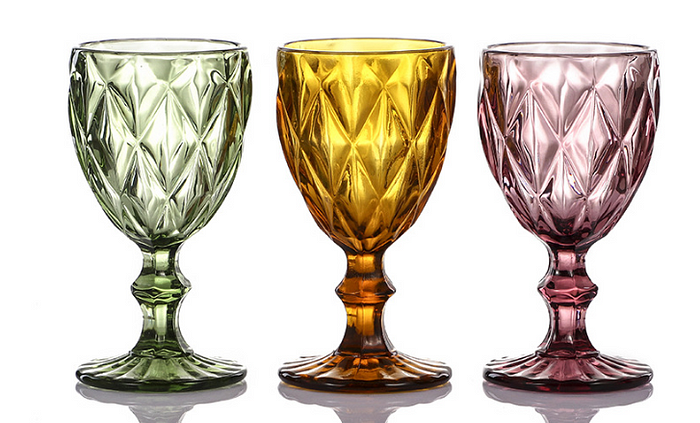When Were Glass Cups Invented?
The Greeks, Romans and Egyptians all drank wine, as did almost all other ancient civilisations. But out of what? It turns out that vessels in the ancient world were made in large quantities and from a variety of materials, including pottery, glass, ivory, stone, wood, leather, bronze, silver and gold.
In the beginning
The earliest evidence of man-made glass comes in the form of beads made in Egypt and Mesopotamia in the last quarter of the third millennium B.C. The archaeological record shows that Egyptian artisans invented the technique of making glass drinking vessels using the core-forming method during the reign of King Thutmose III (1479–1425 B.C.), arguably the greatest warrior pharaoh in Egypt.

By the first century BC, the Egyptians had developed the technique of glass blowing; when the Romans conquered Egypt in 27 BC, the glass then popular in Egypt was introduced to Rome and subsequently spread throughout Europe — to those who could afford it, as glass was very expensive and only available to the elite. There is no mention of glassmaking in Venice until a thousand years later.
The earliest known drinking vessels were made of pottery — clay hardened by heat — and date back to the Late Palaeolithic. During the Bronze Age (3300–1200 BC), when metalworking techniques were introduced, cups and goblets made of bronze and gold began to appear. However, they were still reserved for a wealthy elite.

During the Roman era, metalworking techniques were further developed. It is well known that Roman emperors and senators would drink wine in vessels made of materials such as gold, silver and lead, often with elaborate gilded decorations on the outside. However, on most days an earthenware goblet decorated with ornate buds and leafy swirls would suffice.
The decline of Rome led to the rise of today’s wine culture
Cast glasses were produced in Egypt and Mesopotamia as early as the 15th century BC. With the invention of glass-blowing technology, glass wine vessels re-emerged in Roman times.

This invention revolutionised ancient glass production, putting it on a par with the pottery and metalwork industries of certain parts of the Roman Empire. A very lucky Roman might find himself drinking wine from a glass vessel as beautiful as a Lycurgus cup. Currently in the British Museum, this fourth-century AD glass changes colour according to the light.

The invention of the pressed glass machine in the United States in 1825 ushered in an era of mass-produced, relatively inexpensive glass. (There were, however, companies specialising in the production of high-quality crystal glasses as practical, functional decorative works of art: Baccarat was founded in 1764 and by the 1850s was producing elegant mugs for the world’s elite; Lalique was founded in 1888 and began producing luxury goblets in 1921).

But it was during the Victorian era, in the 1890s, that the mug as it is known today became popular. In the late 1800s, affluence was the order of the day and beautifully engraved crystal goblets adorned the tables of the world’s most famous women. But while such glasses may have looked beautiful, they were not entirely suitable for appreciating their contents. The lightweight glass is designed to enhance the appreciation of the flavours and aromas of wine. The collection was officially launched in 1973; since then, Riedel and Riedel-inspired glasses have been the standard.
Comments
Post a Comment